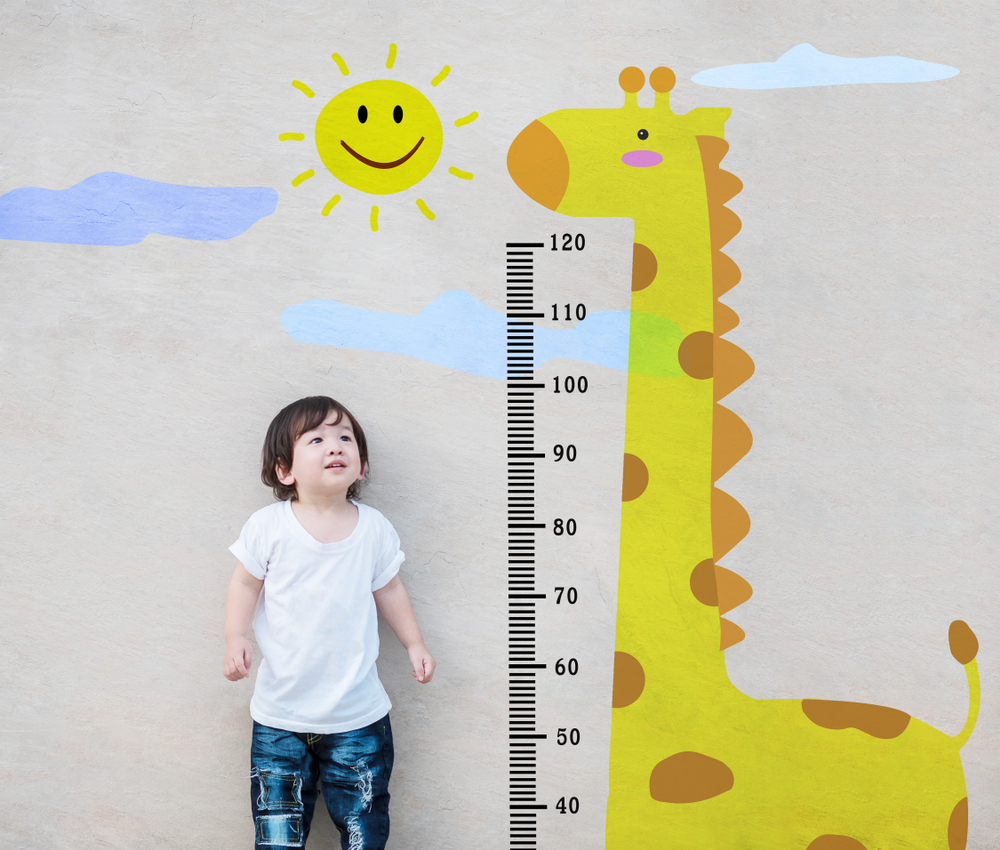Comparing lengths Normal Measurement Worksheets for Ages 3-8
4 filtered results
-
From - To
Explore our "Comparing Lengths" Normal Measurement Worksheets, crafted for children aged 3-8 to develop their understanding of measurement concepts! These engaging worksheets utilize colorful visuals and interactive activities to help young learners differentiate between objects based on their lengths. Whether measuring crayons, blocks, or toys, kids will practice essential comparison skills in a fun and stimulating way. Designed to complement early math education, our worksheets make learning about measurements exciting. Perfect for homeschooling or classroom use, these resources ensure that children grasp foundational math skills while unleashing their creativity and curiosity. Boost your child’s learning journey today!
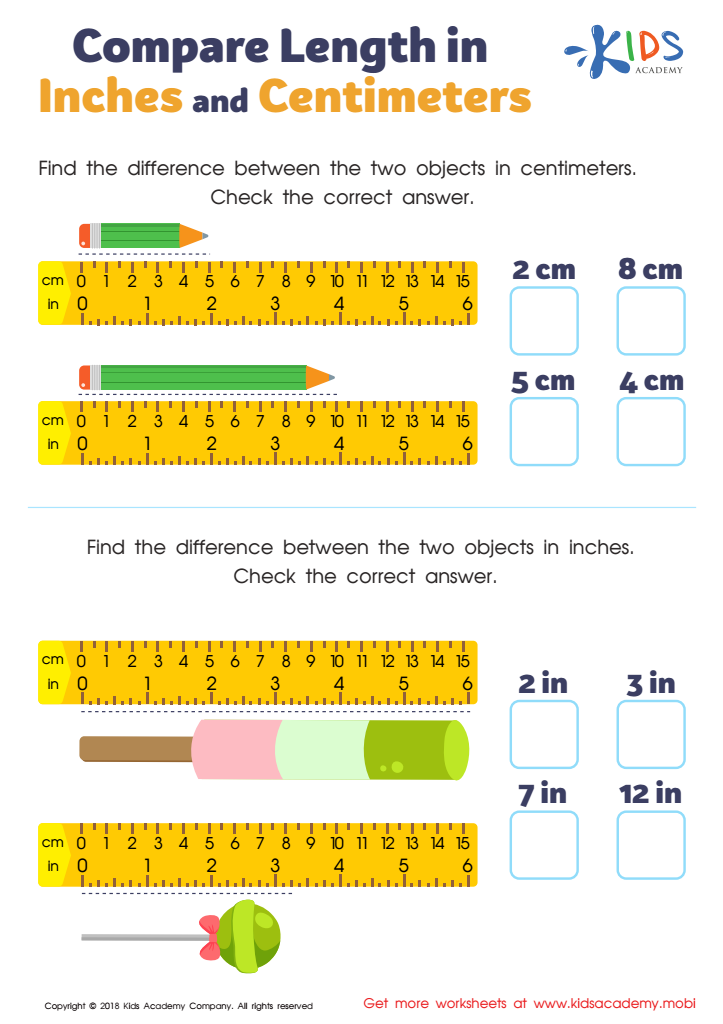

Compare Length in Inches and Centimeters Worksheet
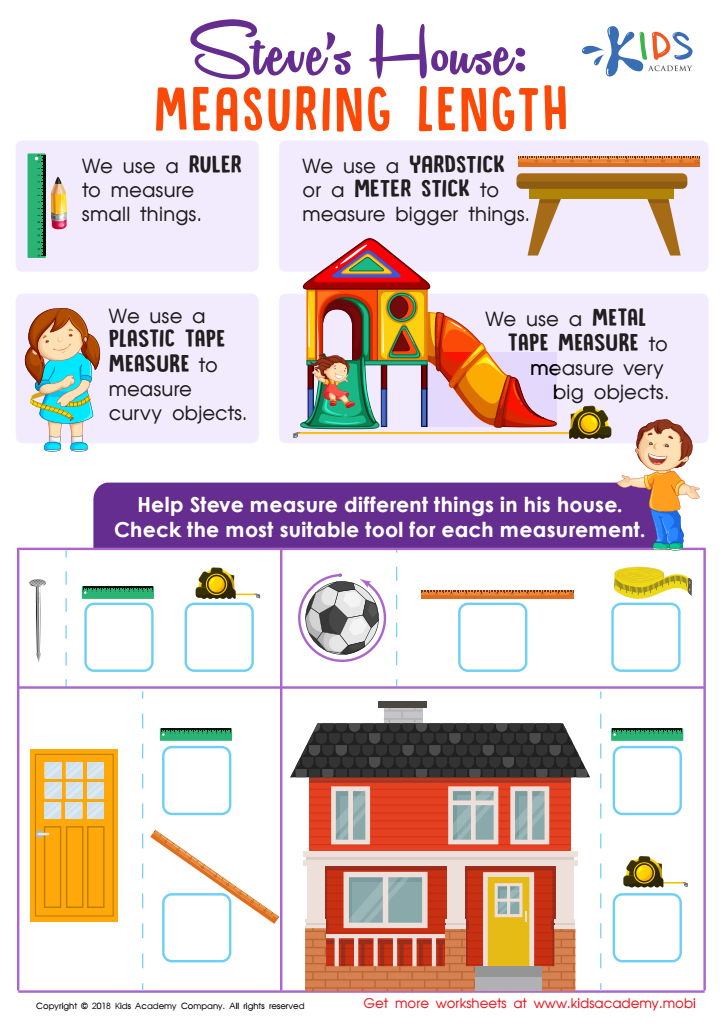

Steve's House: Measuring Length Worksheet
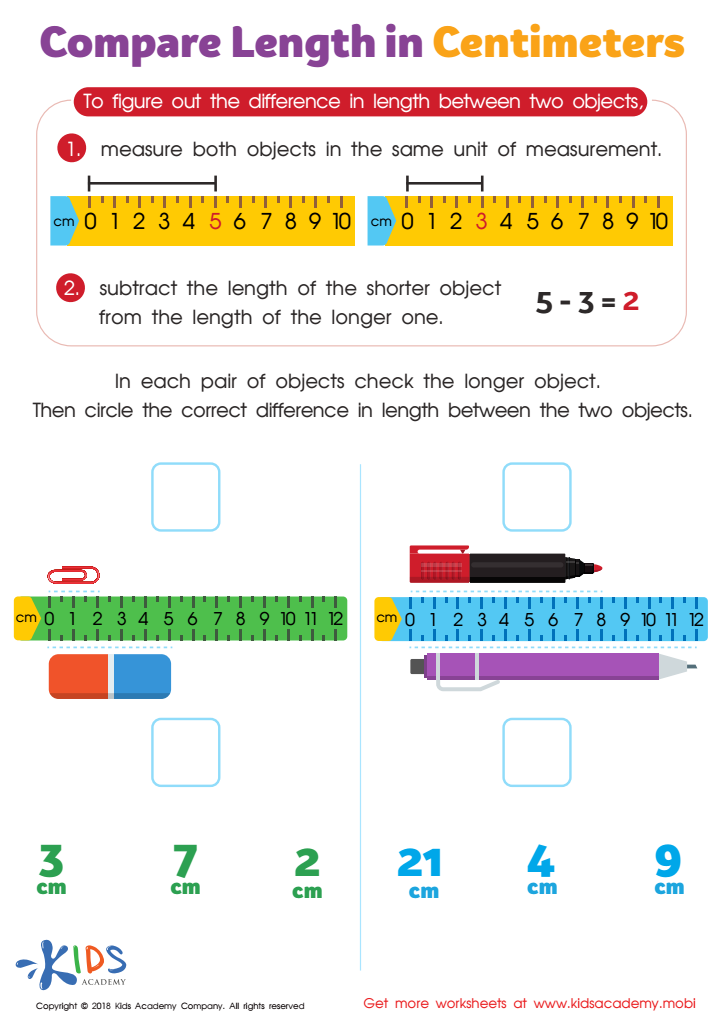

Compare Length in Centimeters Worksheet
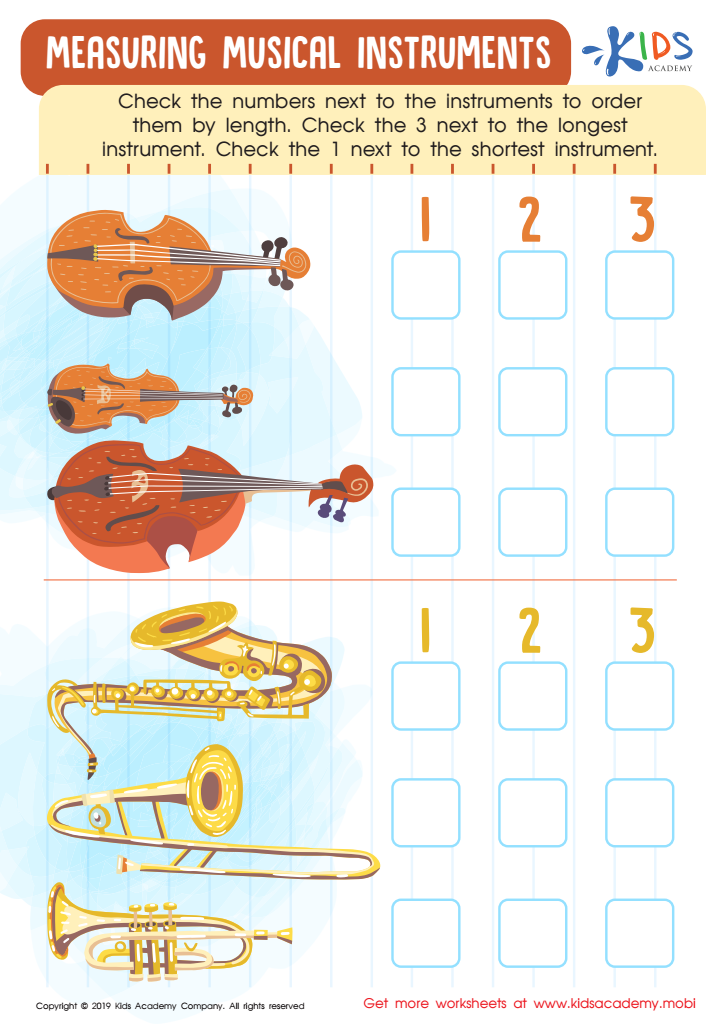

Measuring Musical Instruments Worksheet
Understanding and comparing lengths is a fundamental aspect of early childhood education, especially for children aged 3-8. During this critical developmental stage, children are naturally curious about their surroundings, and comparing lengths is a practical way to engage that curiosity. It promotes critical thinking, spatial awareness, and problem-solving skills, enabling children to understand concepts such as longer, shorter, and equal in tangible ways.
Moreover, learning measurement introduces children to early mathematics, laying the groundwork for more advanced mathematical concepts in later years. By practicing length comparison through hands-on activities, such as measuring toys or using everyday objects, children also enhance their fine motor skills and improve their ability to make connections between abstract ideas and the physical world.
For parents and teachers, emphasizing this skill supports lifelong learning. It fosters observation and comparison abilities and encourages children to describe their world in measurable terms. These skills are not only vital in their early years but also are transferable across various disciplines such as science, technology, and everyday life. By fostering these abilities, we prepare children to become confident learners, ready to tackle more complex mathematical challenges in the future.
 Assign to My Students
Assign to My Students




